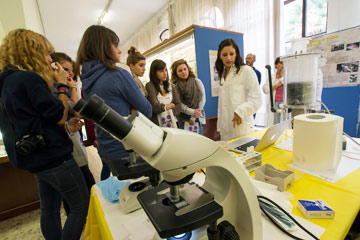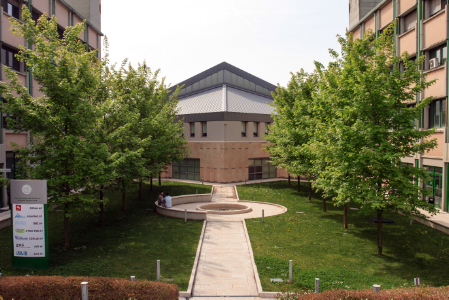The purpose of this research is to bring new knowledge about the biology of lymphoid tissue neoplasms and identify promising therapeutic targets by integrating
proteomic, transcriptomic, immunohistochemical and functional analysis.
In this project, we intend to use an integrated approach to study the pathogenesis of lymphoma samples, in particular of mantle cell lymphoma (MCL). The study shall
then be expanded and shall include other lymphoma entities, especially those with numerous available cell lines (e.g. diffuse large B-cell lymphoma, DLBCL); the use
of primary lymphoma cells should however make possible to study also low-grade lymphomas for which very few cell lines are available (e.g. B-cell chronic
lymphocytic leukemia (B-CLL), marginal zone lymphoma (MZL) and follicular lymphoma (FL)).
We would like to start from MCL because we have a deeper expertise in this field; despite intense investigation, a curative therapy is still lacking; from a purely
experimental point of view, a decent number of cell lines are available, and most of them are extremely well characterised.
Despite extensive research, the complete picture of MCL pathogenesis is still out of sight. One major problem is the discrimination between “drivers” and
“passengers” of the pathogenetic process, because high throughput techniques can detect a lot of information that is not relevant to the pathogenesis of a given
disease.
In this project we pursue an integrated approach to the study lymphoma; by intersecting different experimental models and techniques, that investigate lymphoid
tissue neoplasms at different levels (i.e. genetic, transcriptional and at protein levels), we should be able to identify “driver” candidates. The generated hypotheses
shall then be tested by means of functional assays evaluating their roles in tumour survival. This project stems from the phospho-proteomic data already collected by
our group and gene-expression and cytogenetic data collected either directly or by collaborative efforts, or published in the literature. In this project we propose to
use novel and advanced techniques to gain a comprehensive picture of MCL pathogenesis, which will then be applied to other lymphoma entities. The core of this
project is the availability of cutting edge technology, including next-generation sequencing (NGS) of the transcriptome, shotgun proteomics, automated
immunohistochemistry (IHC) and validated knock-down technology.
The main goal of this project is the collection of relevant data regarding the pathogenesis of MCL by using modern high-throughput techniques. A first approach will
include proteomic profiling of lymphoma tissues and cell lines by gel-based and shotgun proteomic approaches. Advanced proteomic technologies will be used to
discover and verify candidate protein biomarkers. The identification of specific activated pathways will be investigated via protein sample prefractionation of
lymphoma cell lines and then of tissues; this analysis will focus on phosphorylated proteins, on mitochondrial proteins and on proteins of low abundancy (such as
signal transducers, or transcription factors). In addition, our knowledge-base derived from the phospho-proteins we already reported as particularly important for
MCL signal transduction pathways, will be deepened (by accurate mapping the phosphorylation sites) and integrated with the newly acquired data.
A second approach involves the generation of NGS transcriptome data of lymphoma cell lines and tumour samples. These technologies have recently become
available and are so powerful that a whole exonome or transcriptome can be sequenced in a time scale of hours/days. NGS technologies are able to detect mutations
in practically the whole transcribed portion of the sample genome. They also allow the detection of hidden chimeric trancripts, which are very difficult to spot by
other techniques. Moreover, a gene expression profile of unprecedented precision (including the presence of splice variants) can be inferred by the relative
abundance of sequenced transcripts. The information obtained from this analysis is extremely complex, but focusing initially only on the group of alterations that are
related to the proteomic findings should make the analytical process more straightforward and meaningful.
Finally, a thorough validation of findings shall be performed. In order to exclude false-positive findings several validation approaches will be used. First, a technical
validation will be necessary to confirm relevant findings. Independent techniques will be used for the validation of transcriptomic and proteomic data. A validation
concerning relevance in lymphoma tissues of the studied molecules will verify their presence mostly by immunohistochemistry and western blotting (WB). A functional
validation will then use experimental models (cell lines, xenografted tissues) to investigate the functional role of these molecules.
The ultimate goal of this project is the confident identification of candidate therapeutic targets that might form the pre-clinical basis for further experimentation. This
project will also generate a proven workflow that might be easily applied to several lymphoma entities, identifying both similarities and differences and suggesting
potential biomarkers and therapeutic strategies.







